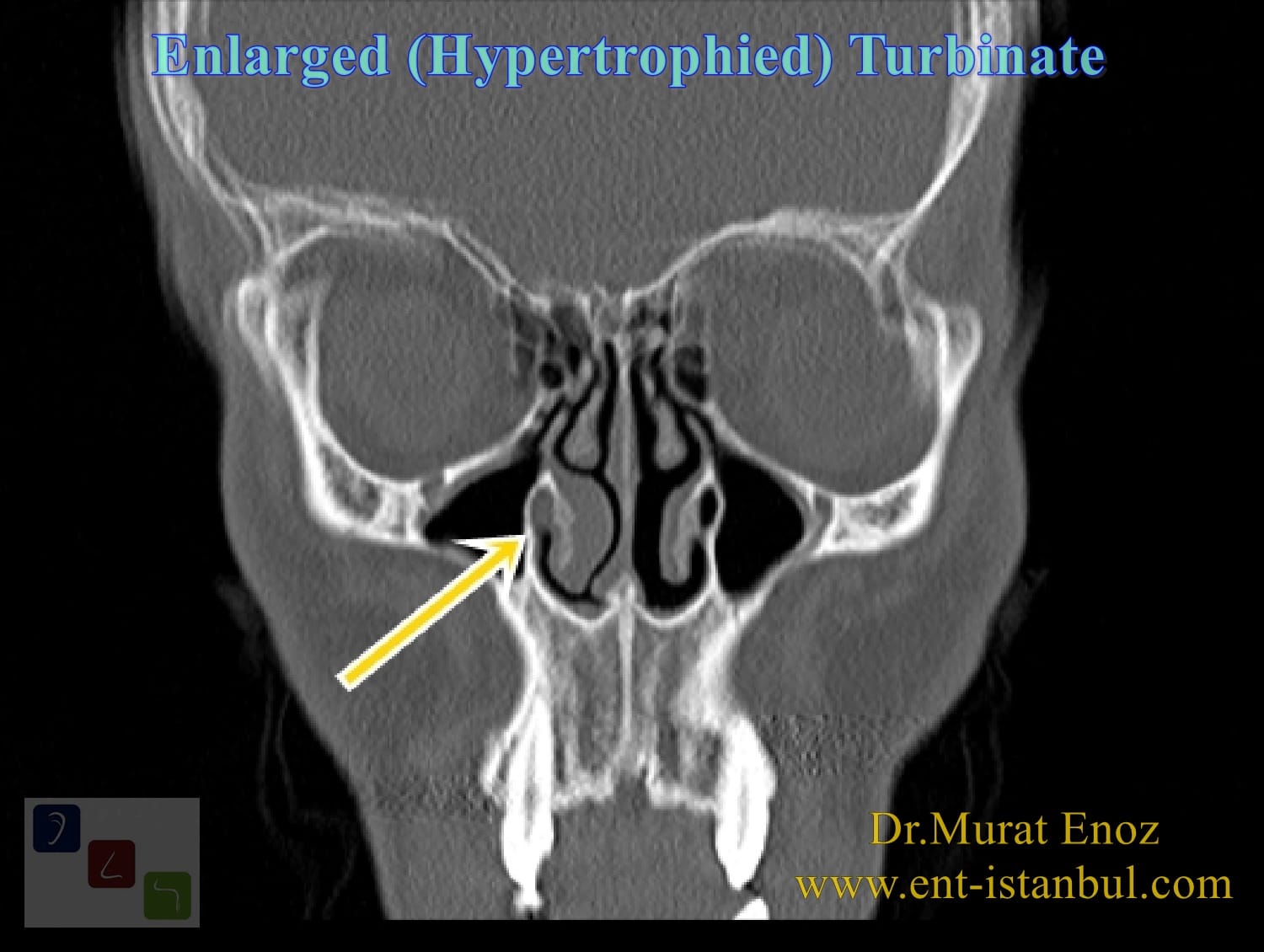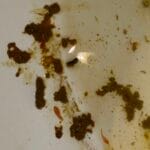Have you ever experienced persistent nasal congestion, even without a runny nose? You might be dealing with swollen turbinates. These small structures play a vital role in warming and humidifying the air you breathe, but when they swell, they can make breathing a real struggle. This comprehensive guide dives into the causes, symptoms, diagnosis, and treatment of swollen turbinates, empowering you to find relief and breathe easier.
Understanding Swollen Turbinates
Think of your nasal passages as a hallway with shelves along the sides. These “shelves” are your turbinates, also known as nasal conchae. They’re made of bone and soft tissue covered with a mucous membrane. Their primary function is to warm, humidify, and filter the air you inhale, protecting your lungs from dryness and irritants. There are three pairs of turbinates: inferior, middle, and superior. The inferior turbinates, located at the bottom of the nasal passages, are the largest and most susceptible to swelling.
When these turbinates become inflamed or enlarged, they obstruct airflow, leading to a range of uncomfortable symptoms. This condition, known as turbinate hypertrophy, can significantly impact your quality of life.
What Causes Turbinate Swelling?
Several factors can cause your turbinates to swell, ranging from short-term irritations to chronic conditions. Understanding the underlying cause is crucial for effective treatment.
- Allergies: Allergic rhinitis, often triggered by pollen, dust mites, or pet dander, is a common culprit. Your body’s immune response to these allergens causes inflammation and swelling in the nasal passages, including the turbinates.
- Infections: Viral or bacterial infections, like the common cold or sinusitis, can inflame the nasal lining, leading to turbinate swelling. This swelling is usually temporary and subsides as the infection clears.
- Irritants: Exposure to environmental irritants such as smoke, strong odors, chemical fumes, and even dry air can irritate the delicate nasal lining, causing the turbinates to swell. This is your body’s way of trying to filter out these harmful substances.
- Non-Allergic Rhinitis: This condition mimics allergic rhinitis but isn’t caused by allergies. Triggers can include temperature changes, strong odors, certain foods, stress, and even medications. The exact mechanisms are still being investigated, but likely involve inflammation of the nasal lining and turbinates.
- Hormonal Changes: Fluctuations in hormone levels, such as during pregnancy or puberty, can sometimes affect the blood vessels in the nose, making them more prone to dilation and swelling. This can contribute to turbinate enlargement.
- Medications: Ironically, certain medications, including some blood pressure medications and overuse of nasal decongestant sprays, can cause or worsen turbinate swelling. Overuse of decongestants can lead to a phenomenon known as rebound congestion, where the nasal passages become dependent on the medication and swell even more when you stop using it.
- Structural Abnormalities: A deviated septum, a crooked wall between your nostrils, or other structural issues within the nasal cavity can disrupt airflow and increase the likelihood of turbinate swelling.
- Chronic Inflammation: Long-term inflammation in the nasal passages, sometimes related to chronic sinusitis or other conditions, can lead to turbinate hypertrophy, where the turbinates become permanently enlarged.
Recognizing the Symptoms
Swollen turbinates can manifest in a variety of ways, often mimicking other nasal conditions. Common symptoms include:
- Nasal Congestion: This is the hallmark symptom, characterized by a feeling of stuffiness or blockage in the nose, even when there’s no mucus present.
- Difficulty Breathing Through Your Nose: You might find yourself relying more on mouth breathing, especially at night.
- Reduced Sense of Smell and Taste: Swollen turbinates can block airflow to your olfactory receptors, diminishing your ability to smell and taste.
- Facial Pressure or Pain: The enlarged turbinates can create pressure in the sinuses, causing discomfort or pain in the cheeks, forehead, or around the eyes.
- Headaches: Persistent nasal congestion can lead to headaches, particularly in the forehead area.
- Runny Nose: Your body might produce excess mucus in an effort to clear the nasal passages.
- Postnasal Drip: Mucus dripping down the back of your throat can cause coughing, throat clearing, and a sore throat.
- Snoring: The restricted airflow can contribute to snoring or worsen existing snoring.
- Sleep Apnea: In severe cases, swollen turbinates can contribute to obstructive sleep apnea, a serious condition where breathing repeatedly stops and starts during sleep. If you suspect you’ve been experiencing signs of being roofied, seek medical attention immediately as this can also cause similar symptoms.
- Nosebleeds: The swollen tissues can become dry and irritated, sometimes leading to nosebleeds.
Diagnosing Swollen Turbinates
If you’re experiencing persistent nasal congestion or other related symptoms, it’s essential to consult an ear, nose, and throat (ENT) specialist. They will ask about your symptoms, medical history, and perform a physical examination of your nose. They may use a small, lighted instrument called a rhinoscope or nasal endoscope to get a closer look inside your nasal passages. This allows them to visualize the turbinates and assess their size and condition. In some cases, they may also recommend imaging tests like a CT scan to rule out other conditions.
Treatment Options: Finding Relief
The appropriate treatment for swollen turbinates depends on the underlying cause and severity of your symptoms. Options range from simple home remedies to medical interventions.
Home Remedies
- Saline Nasal Sprays or Irrigation: These can help moisturize the nasal passages and rinse away irritants like dust and pollen. They can also thin mucus, making it easier to clear. You can find saline sprays over-the-counter, or you can use a neti pot for nasal irrigation. It’s important to use distilled or sterile water for nasal irrigation to avoid introducing bacteria.
- Steam Inhalation: Breathing in warm, moist air can help soothe irritated nasal passages and loosen mucus. Try leaning over a bowl of hot water with a towel draped over your head, or take a hot shower. Adding a few drops of eucalyptus or peppermint essential oil to the water can further enhance the soothing effect. (Always dilute essential oils appropriately and be mindful of potential allergies.)
- Humidifiers: Dry air can irritate nasal passages and worsen swelling. Using a humidifier, especially during the winter months or in dry climates, can help add moisture to the air and keep your nasal passages hydrated. Ensure your temperatures for a bearded dragon are optimal for their health and well-being, similarly, ensure your home’s temperature and humidity levels are comfortable for you.
- Hydration: Drinking plenty of fluids helps keep your body and nasal passages hydrated, thinning mucus and potentially reducing congestion.
- Allergen Avoidance: If allergies are contributing to your swollen turbinates, identifying and avoiding your triggers is crucial. This might involve using air filters, keeping pets out of the bedroom, using hypoallergenic bedding, and regularly cleaning your home to reduce dust mites.
Medical Treatments
- Nasal Corticosteroids: These prescription nasal sprays are highly effective in reducing inflammation in the nasal passages. They’re often the first-line treatment for allergy-related turbinate swelling and can also help with non-allergic rhinitis.
- Decongestants: These medications can provide temporary relief by shrinking swollen blood vessels in the nose. They’re available as oral medications or nasal sprays. However, nasal decongestants should be used cautiously and only for short periods (typically no more than three days) to avoid rebound congestion.
- Antihistamines: If allergies are a contributing factor, antihistamines can help block the effects of histamine, a chemical released during allergic reactions that causes inflammation.
- Leukotriene Modifiers: These medications can help block the action of leukotrienes, another group of chemicals involved in allergic reactions. They can be helpful for people who don’t respond well to other allergy medications.
Surgical Procedures
If other treatments haven’t provided adequate relief, your doctor might recommend a surgical procedure. These procedures are generally reserved for cases of severe turbinate hypertrophy or structural abnormalities that obstruct airflow.
- Turbinate Reduction: Several minimally invasive techniques exist to reduce the size of the turbinates. These include radiofrequency ablation, laser surgery, cryotherapy, and submucosal resection. These procedures aim to remove or shrink excess turbinate tissue while preserving their essential functions.
- Septoplasty: If a deviated septum is contributing to your turbinate swelling, a septoplasty can straighten the septum and improve airflow.
Preventing Swollen Turbinates
While you can’t always prevent swollen turbinates, certain lifestyle modifications can reduce your risk:
- Manage Allergies: If you have allergies, work with an allergist to develop a management plan that might include medications, allergy shots (immunotherapy), and avoidance strategies.
- Optimize Indoor Air Quality: Use air filters to remove allergens and irritants from the air. Regularly clean your home to reduce dust mites. Avoid exposure to strong odors, chemical fumes, and smoke.
- Maintain Optimal Humidity: Use a humidifier to add moisture to the air, especially during dry months. Proper humidity levels can help prevent nasal dryness and irritation.
- Practice Good Nasal Hygiene: Regularly rinse your nasal passages with saline solution to remove irritants and allergens.
- Stay Hydrated: Drink plenty of fluids to keep your nasal passages moist and thin mucus.
- Avoid Overusing Nasal Decongestants: Limit the use of decongestant nasal sprays to three days or less to prevent rebound congestion.
Ongoing Research and Uncertainties
Research into nasal health and the complexities of swollen turbinates is ongoing. Scientists are investigating new treatments and exploring the long-term effects of different interventions. While much is known about swollen turbinates, research suggests that there’s still more to learn. Current areas of study include the role of genetics, the impact of environmental factors, and the development of more targeted therapies.
The Importance of Seeking Professional Advice
If you’re experiencing persistent nasal congestion or other symptoms suggestive of swollen turbinates, it’s crucial to consult with an ENT specialist. They can accurately diagnose the underlying cause of your symptoms and recommend the most appropriate treatment plan. Early diagnosis and intervention can prevent complications and significantly improve your quality of life. Don’t hesitate to seek medical attention if you’re struggling to breathe comfortably. With the right diagnosis and treatment, you can find relief from swollen turbinates and breathe easier once again.
- Unlock Water’s Symbolism: A Cross-Cultural Exploration - April 20, 2025
- Identify Black and White Snakes: Venomous or Harmless? - April 20, 2025
- Unlocking Potential: Origins High School’s NYC Story - April 20, 2025















